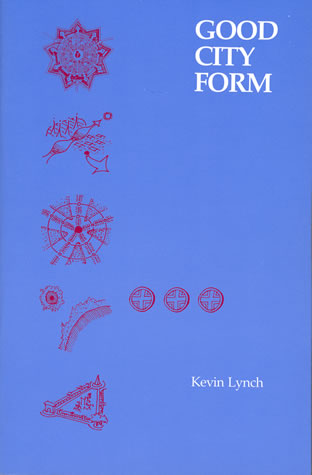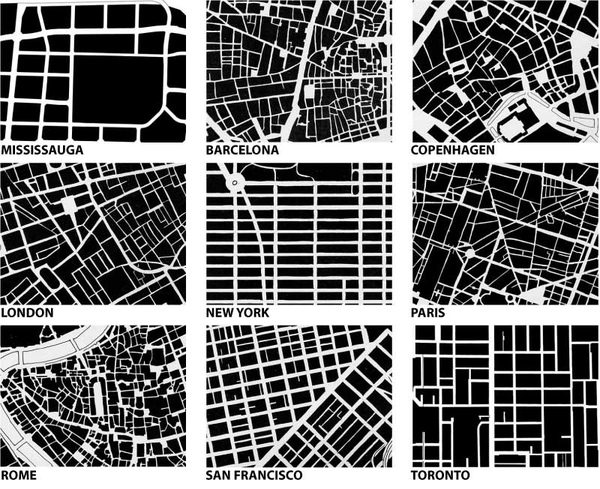
這篇書評我拿了滿分
是一本我很喜歡的書(和我一樣年紀的書:p)
在講什麼是好的城市
深入淺出的文字和文學式的敘述 以及很多的城市設計的圖
不需要是個專家或是研究生就可以看得懂的書
In “Good City Form”, Lynch constructed a normative theory to evaluate the forms and values of cities. Knowing that it is impossible or even dangerous to generalize performance standards for cities, he set up performance dimensions. In his own criteria for these performance dimensions[i], Lynch said that these dimensions should cover all features of settlement form, be usable where values differ, be independent of one another and deal with qualities which change over time. This attempt to build such a comprehensive theory is difficult. The dimensions in this book may not be perfect, but they combine the physical values as well as the social ones within these characteristics which we can perceive, evaluate and improve on.
The greatest achievement resulted from this book is that it builds up universal dimensions to evaluate both the social and physical aspects. These dimensions are: vitality, sense, fit, access and control and two meta-criteria of efficiency and justice. Each of them comprises subdimensions that value the physical utilities as well as psychological needs. For example, the access dimension talks not only about the physical accessibility to a certain place, object or person; it also emphasizes the diversity of things given access to and the equity of them. He dealt not only with the superficial level of a city’s functionality but also with the experiences, impression and values within. While discussing the culturally-dependent dimensions, he was being careful not to favor any particular set of cultural standard. He pulled examples from cities throughout the world and supported his theories base on characteristics that are common to every human being. In the perspective of being generic to all cultures, these dimensions are well-grounded.
Then he moved forward to an evaluation of these dimensions. This is the part where things get complicated because there must be a set of recognized values before there is an evaluation. Some values are commonly accepted, such as just, equity, people’s preference for efficiency and control etc. However, there are also the hardly definable ones such as what is a good fit? Or what makes a place a good sense? Lynch tried to make these concepts explicit to us by subcategorizing them in detail and provided plenty of illustrative narrations. He was very careful with these elusive concepts and went back to re-examine and dig into each of the presumption behind. This makes his logic sounder and convincing even though some of these ideas are still blurry to the readers.
This is probably why he was attacked as being verbose, because it seems like he spent a lengthy paragraph yet led us to no conclusion. However, I have to disagree with such criticism. Having no conclusion doesn’t mean the discussion is worthless. Instead, the process of exchanging ideas, receiving information and understanding the interconnectivity of a city’s social and physical value is best done by such narrative descriptions. This is the way to encourage people feel and imagine the characteristics instead of being confined to rigid checkpoints and formula. In addition, this style makes these concepts readable and easily understandable to all kinds of people. One needs not to be a social scientist, engineer, or city planner to understand the concept of good city forms through his book. He aroused a common experience, memory and sense that each individual holds toward a city and that is what makes this book successful.
The theory is not perfect, as Lynch criticized himself in the epilogue, there is a lack of complementary theories on how cities come to be and functions are developed. Besides, the dimensions are sometimes arbitrary and ambiguous. These dimensions are sometimes overlapping or even serve as the subcategory of another dimension (for example, the accessibility to daily goods is a subcategory of vitality.) These intricate connections suggest that there is no clear distinction among these dimensions. However, these dimensions still provide us a good base and directions to work on. Maybe some modifications or elaboration on the dimensions is needed, but overall it gives us a sound idea of his attempt.
“Good City Form” created a combined evaluation on a city’s physical form and its interaction with human activities. Lynch’s dimensions show the inseparable relationship of constructions and values. From these dimensions he reemphasized that holding a purely mechanic view of cities by no means can construct a good city. While designing cities, we should always hold in mind the more important values such as justice. Even though Lynch does not talk about the current buzzword of sustainability, these dimensions have constructed a balance on social and physical values. In a good city of Lynch’s, it would be a harmony society that keeps a balance with the environment and human beings.
[i] LYNCH Kevin, Good City Form, 1981 The MIT Press, page 113 (criteria for performance dimensions)




 留言列表
留言列表
